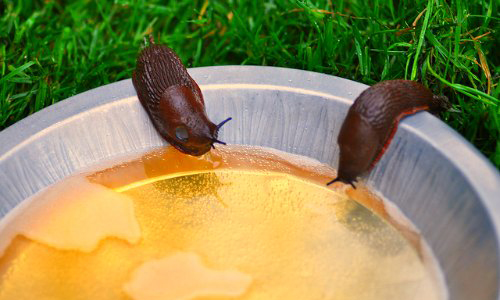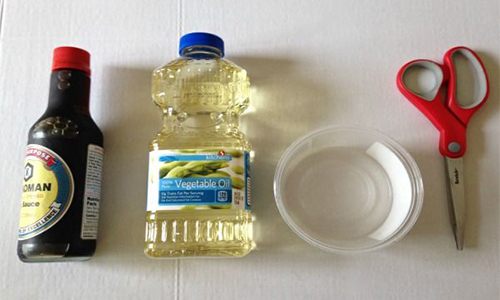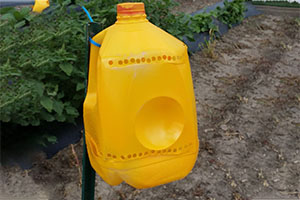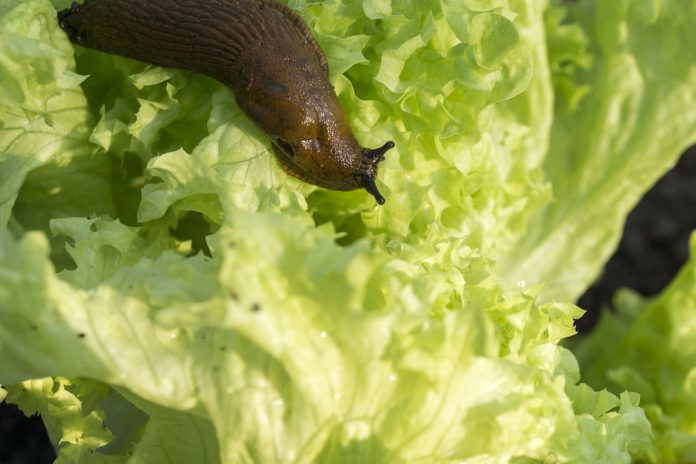It could be a little challenging to actually know what season we are in right now, depending on where you live. Moving from winter-like temperatures, to balmy and steamy days and nights is not unusual. But, this year in particular, it seems our thermostat gets a thrashing in a tug-of-war game. And, so it’s hard to know when to plant. Or, perhaps even how to protect what you might have already planted or are going to do some day.
Temperatures, of course, aren’t the only potential enemy who might attack your garden. No, there are a few insects and pests that will take full advantage of all your hard work, and can easily destroy your garden. At least that could lead to some unnecessary frustration and disappointment.
I say “unnecessary” because there are options to help control those pests, giving you more time to enjoy the fruits of your labor, or veggies. A homemade trap is probably the most rewarding option. You may already have some of the supplies on hand, making it faster, cheaper, and more natural than hiring a firm to take care of your infestation.
So hopefully this easy and simple homemade traps below will help you secure your garden and maintain all your hard work.
Related: 47 Gardening Hacks
For Earwigs and Slugs – use a Pit Trap
Slugs are night dwellers who like dining on leaves. But they appear to be drawn to beer too. Yep, good old trendy brew. If you have a problem getting your garden messed up by slugs, pop open a brew.
Place a shallow container in your garden on the ground, right in the middle of your most slug-vulnerable plants, like strawberries or lettuce. For this type of trap an old pie plate or Frisbee would work well. Pour about 1″ of beer into your new trap bottom, then walk away. It is so easy, really.


The slugs would be drawn to the beer, crawl in and slowly drown. If you don’t want to waste a good beer, then sugar water mixed in with a little bit of yeast will work as well. They enjoy a good fermented gas and therefore will leave your plants alone. If it dries up or gets polluted from heat, just refill the mix.
Other night dwellers are Earwigs, lurking at the bottom of pots and containers during the day. They do havoc on leaves and plants as well.
Put some vegetable oil in the bottom of the shallow containers, this time, and add a touch of soy sauce. Same outcome as the beer method.


Small Insects and Sticky traps
Sticky traps are great for tiny insects, like flea beetles, aphids, flies, white flies, which can destroy your garden.
By taking an old greeting card or paper cup and coating it with a sticky concoction, you can easily make a sticky trap! Seek to use as simple a thick syrup or petroleum jelly as this. Then, stick it among plants in the garden.


And, some insects are drawn to some colors, which may vary. Here are a couple:
- Yellow-flies, beetles of cucumber, flea beetles and some aphids
- Green-A few aphids
- Blue – Thrones
So, in addition to the sticky mix, if you are specifically trying to target any of the above, make the trap in the color they ‘re attracted to. If you can’t find the material in the color you want, then, of course, paint it before you add the sticky matter.
Yellow Pans for Squash Vine Borers and Aphids


However, this will be made even more effective by 2 additional steps. First, choose a yellow container, such as a Frisbee or a painted pie plate or tin, to get their attention. Second, add a small amount of liquid soap to water. Just a few drops are going to do it. That will make swimming harder and they drown faster.
If you’re looking to target bigger pests, such as moths and the squash vine borers they become, you ‘re going to want a deeper vessel, one that holds at least 2″ water. During the day, some moths fly, so have the yellow pan traps out around the clock.
Cucumber Beetles and Yellow Traps
The downside to open pan traps is that they could also trap beneficial insects, such as bees, unintentionally.


This is a good trapping choice for cucumber beetles, as they are much smaller than bees. Put some cucumber peels down the bottle and water to add to the lure.
You should monitor all the traps mentioned in this article. That can tell you what insects are trying to invade your garden and how well the traps are working and how often they need to be refreshed. That should happen every week. Then again, more often than not, you’ll be out in the garden to check on your plants. So, it is easy to check on them.
Related: What is Hydroponic Gardening?





















